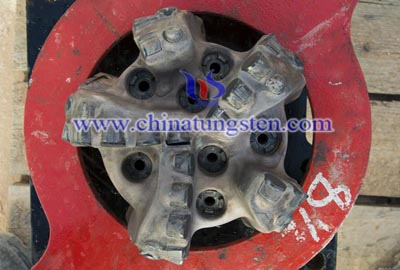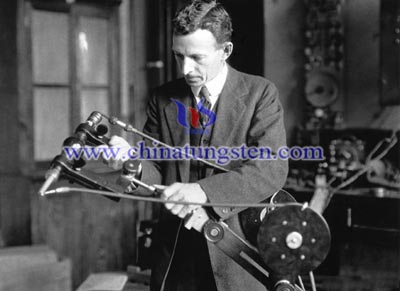Tungsten: the Perfect Metal for Bullets and Missiles Part Two
- Details
- Category: Tungsten Information
- Published on Tuesday, 02 September 2014 16:19
At SGS Carbide, a tool manufacturer just outside London, they use a lot of the stuff. They make a range of drill bits and cutting tools used in the aerospace, automobile and many other industries out of tungsten carbide - a super-hard compound of tungsten and carbon - cemented together with cobalt.
So how do you shape one of the most extreme materials on the planet?
You have to use the only thing tougher - diamonds. Even using diamond cutting tools the work involves an unholy battle, though you wouldn't know it inside SGS Carbide's factory. There's no smoke or sparks. All you hear is a quiet hum from the lathes and other machines.

Each one is contained in its own sound-proof box and has a sophisticated cooling system using refrigerated oil. But even with these state-of-the art machines it can take 10 minutes or more to cut a single drill bit. And they are expensive - a single drill bit can cost more than £500 ($750).
Yet, as more and more advanced alloys are used in industry, the demand for the super-strong, super-durable and super-accurate tools companies like SGS Carbide produce has grown. As most of the tungsten mined on the planet is used to make these tools, the price of the raw metal has been rising.
At the same time what may be tungsten's best-known industrial use now looks to be in terminal decline.
In a small room off one of the corridors of the chemistry department of University College London, Prof Andrea Sella holds up an old-fashioned incandescent light bulb. Through the clear glass I can see the fragile filament shiver as he gently shakes the bulb.
"The greater the current the hotter that little coil of tungsten gets and the brighter it glows," explains Sella.

Once, all our homes were illuminated by bulbs like these, but it took almost 100 years of trial and error to settle on tungsten. The great scientists and inventors who developed the first light bulbs tried out filaments of platinum, iridium, carbonised sewing thread and even bamboo - the latter both innovations of Thomas Edison's.
Then in 1908 another great American inventor, William D Coolidge, finally figured out how to make wires out of ultra-tough tungsten. These proved ideal filament material - strong, durable and heatable to extreme brightness without melting.
Tungsten filaments served us well for a century but the truth is they were always much better at producing heat than light - in some bulbs as much as 97% of the energy was lost as heat. That's why across the world incandescent bulbs are now being replaced by far more efficient compact fluorescents, light emitting diodes and other technologies.
But tungsten is still the basis of the two crucial technologies that help us see the world in very different ways.

Tungsten filaments generate the X-rays that give us a view inside our bodies and bones, and also the welds that hold ships, planes and bridges together. It is also used to form the emitter tips of the electron guns that allow electron microscopes to peer down and examine objects as tiny as single molecules.
But it was tungsten's density that earned it its name - it comes from the Swedish tung sten, heavy stone.
It is almost three times as dense as iron, almost twice that of lead and virtually the same as gold.
And, like the proliferation of new species during the Cambrian explosion, all sorts of weird applications have evolved to exploit tungsten's unique qualities.



 sales@chinatungsten.com
sales@chinatungsten.com